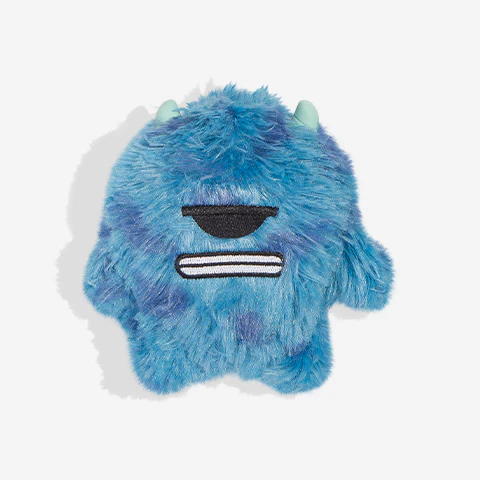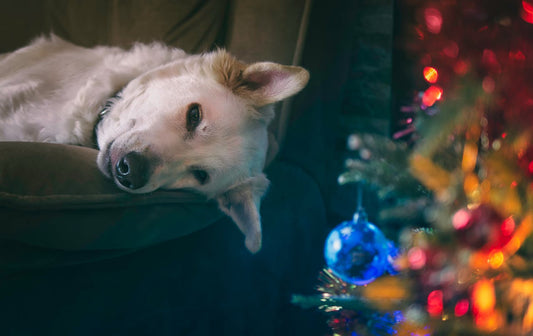Training a dog to be comfortable alone while their owner is at work can significantly improve both the pet's well-being and the owner's peace of mind. Gradual desensitization to alone time, combined with consistent routines and rewarding positive behavior, will help a dog feel secure when left alone. This process not only prevents anxiety but also fosters independence, allowing the pet to adapt to their owner's absence.
Creating a safe space equipped with engaging toys and activities can ease the transition. When a dog associates their alone time with fun and comfort, they become more relaxed. Implementing short departures, gradually increasing the time away, builds confidence and reduces stress for the pet.
Consistency is key in this training journey. By establishing a predictable schedule and rewarding calm behavior, the dog learns that being alone is a normal part of life. This approach leads to a more adaptable pet, making separation less daunting for both the dog and the owner.
Understanding Your Dog's Needs
Recognizing and addressing a dog's needs is crucial when training them to stay alone during work hours. Key factors include separation anxiety, the importance of establishing a routine, and ensuring adequate exercise.
Comprehending Separation Anxiety
Separation anxiety can affect a dog’s behavior when left alone. Signs include excessive barking, destructive behavior, or attempts to escape.
To address this issue, owners should gradually increase the time spent apart from their dog. Start with short absences, rewarding calm behavior upon return. Utilizing calming aids, such as pheromone diffusers or anxiety wraps, can also help.
It is essential to create a positive association with being alone. This can be achieved by providing engaging toys and safe spaces, allowing the dog to feel secure during absences.
The Importance of Routine
Establishing a consistent routine provides structure that dogs thrive on. Dogs benefit from knowing what to expect throughout the day.
A regular schedule includes set times for meals, walks, and playtime. This predictability reduces anxiety and helps them adapt to being alone.
Owners should also incorporate training sessions into the routine. Short, regular training intervals reinforce good behavior and strengthen the bond between the owner and the dog. Predictable interactions create a sense of security and reduce the dog’s stress levels.
Providing Adequate Exercise
Regular physical activity is vital for a dog's well-being. Insufficient exercise can result in pent-up energy, leading to destructive behavior when left alone.
Daily walks, play sessions, or interactive games stimulate both the mind and body. A well-exercised dog is less likely to experience anxiety when alone.
Incorporating puzzle toys and treat-dispensing devices can further keep a dog engaged while alone. These activities not only tire the dog out but also provide mental enrichment, making separation periods more manageable.
Creating a Comfortable Environment
Establishing a comfortable environment is essential for a dog’s well-being when left alone. This helps reduce anxiety and promotes a sense of security, allowing the dog to feel at ease during the owner's absence.
Setting Up a Safe Space
Creating a safe space for a dog is crucial. This area should be free from hazards and distractions. Designate a room or space where the dog feels secure, using baby gates if necessary.
Include items that provide comfort and familiarity, such as their bed and favorite toys.
Ensure the environment is quiet and away from heavy foot traffic. A cozy blanket or clothing item with the owner’s scent can also soothe the dog in their safe zone.
Interactive Toys and Entertainment
Interactive toys can keep a dog engaged and mentally stimulated. Consider toys that challenge the dog, such as puzzle feeders that dispense treats.
Rotate toys regularly to maintain interest and excitement.
For chewing needs, durable chew toys or bones can satisfy instincts while also promoting dental health.
It's beneficial to include toys that encourage the dog to engage in solo play, helping to build confidence when they are alone.
Controlled Feeding and Water Access
Establishing a feeding routine helps dogs anticipate their meal times. Schedule feedings in the morning before leaving for work, and provide a controlled amount of food.
Using automatic feeders can help manage portion sizes if the owner is away for an extended period.
Always ensure that fresh water is available. A spill-proof water bowl or a pet water fountain can keep water accessible without a mess.
Monitoring food intake and adjusting it as necessary supports the dog's health and prevents anxiety associated with hunger.
Training Techniques for Independence
To help a dog feel comfortable being alone, specific techniques can aid in building their independence. Gradual desensitization, obedience training fundamentals, and alone time training are essential methods to consider. Each plays a unique role in making a dog more self-reliant and at ease in solitude.
Gradual Desensitization
Gradual desensitization involves slowly acclimating the dog to being alone for short periods. Start by leaving the dog in a safe space for just a few minutes. Gradually increase the time away, ensuring the dog remains calm.
- Create a Comfortable Environment: Use a crate or a designated area with familiar items.
- Short Departures: Begin with quick outings, such as stepping outside for a moment.
- Reward Calmness: Provide treats or praise when the dog remains calm during your absence.
This method helps the dog associate alone time with positive experiences and reduces anxiety.
Obedience Training Fundamentals
Strong obedience training is foundational for fostering independence. Teaching basic commands, such as "sit," "stay," and "come," builds trust and understanding.
- Reinforce Commands: Use positive reinforcement techniques like treats or affection to encourage proper behavior.
- Consistency is Key: Practice commands regularly to ensure the dog retains skills.
- Gradual Complexity: Introduce more complex commands as the dog becomes proficient, encouraging problem-solving.
A well-trained dog is more likely to feel secure when left alone, as they understand their owner's expectations.
Alone Time Training
Alone time training focuses on increasing the duration the dog spends alone, gradually extending each session. This technique builds confidence and reduces separation anxiety.
- Establish a Routine: Regularly scheduled alone time gives the dog predictability.
- Use Toys or Puzzles: Provide engaging toys to occupy the dog’s mind during alone time.
- Gradual Lengthening: Start with 10-15 minutes and gradually extend the time away as the dog adjusts.
This training method emphasizes independence and reassures the dog that being alone is a normal part of their day.
Preparing for Emergencies
When training a dog to stay alone, it's crucial to consider emergency situations. Having a plan for unexpected events can ensure the dog's safety and well-being.
Emergency Contact Information
Establishing a clear list of emergency contacts is essential. This list should include:
- Veterinarian: Name, phone number, and address.
- Emergency Animal Hospital: Address and after-hours contact information.
- Trusted Friend or Neighbor: A reliable person who can step in if needed.
This information should be accessible in your home, perhaps on the refrigerator or near the dog's crate. Additionally, consider giving a copy to your dog sitter or anyone involved in the dog's care. Regularly updating this list ensures all contacts are accurate.
Safety Measures and Backup Plans
Creating safety measures maximizes the dog's protection when left alone. Start by ensuring the environment is safe:
- Remove Hazards: Secure all toxic plants, chemicals, or small objects that could be swallowed.
- Dog-Proof Space: Limit access to rooms that may pose risks, like kitchens or garages.
In addition, establish a backup plan for unexpected situations. This may include:
- Pet Sitter or Walker: Reliable individuals who can step in during emergencies.
- Emergency Crate: Designate an area that is safe and comfortable for the dog.
By implementing these measures, a dog owner can ensure that their pet remains safe and secure, even in emergencies.








